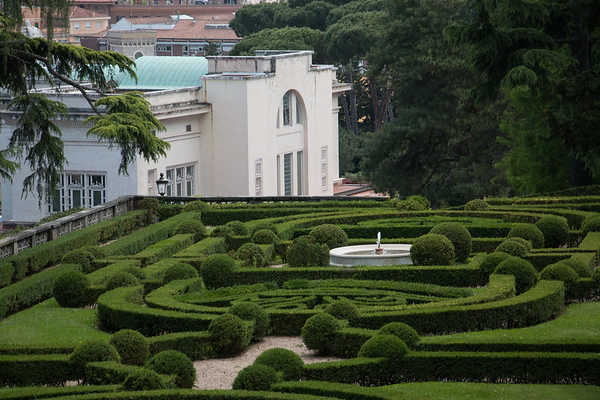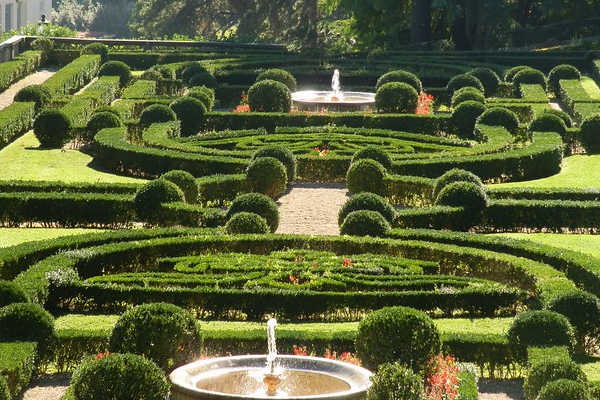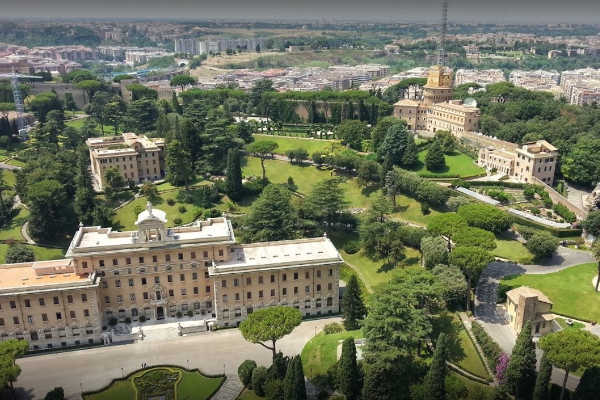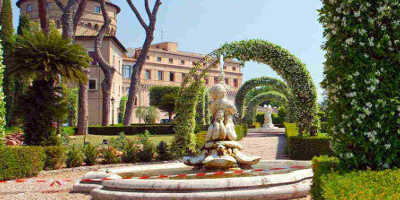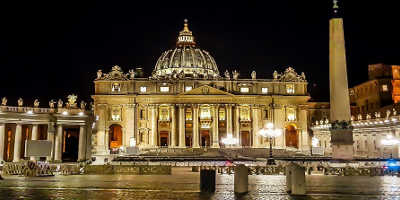Vatican Gardens, Vatican City
Though the Vatican City is notorious for being one of the busiest tourist destinations in Europe, the Vatican Gardens can provide one with some much-needed peace.
Ambient walkways gently carve their way through pristine lawns and trimmed hedges. Dappled sunlight shines through the leaves of towering trees and the bustle and chaos of the streets of the Vatican City are left behind.
History of the Vatican Gardens
The birth of the gardens began in 1279 when Pope Nicholas III planted an orchard, a lawn, and a garden. The grounds grew substantially, now spanning 57 acres across the city. As these areas have changed and grown significantly over the past centuries, the Gardens now envelope over 57 acres. When it was first built, the garden was enclosed by walls but in the 16th-century it took on new life, undergoing major landscaping. At this time, Pope Julius II commissioned one of the architects of St Peter’s, Donato Bramante, to draw up new plans for the garden. It is from this point that the garden began to take on the stunning appearance we see today.
There have been many names for the gardens, originally known as the ‘The Gardens of Vatican City,’ as well as both ‘Giardini Vaticani’ and ‘The Pope’s Playground.’ Home to a range of medieval fortifications, buildings, and monuments dating from the 9th century to modern-day.
The Atmosphere at Vatican Gardens
Collections of plants with informative plaques can be found throughout the gardens. Each tells a different story of the plant’s origin and its significance to this holy place. The gardens are owned by the Pope and cover 23 hectares, which means they take up more than half of the Vatican City. A large portion of them runs over the Vatican Hill, and the highest point of the gardens is 60m above sea level, providing an excellent viewpoint for your surroundings.
These gardens have been a haven of peace and reflection since the late 13th Century. They were born to Nicholas III when he moved here, encompassed his land in walls and planted lawns and orchards which grew over the centuries to become the immaculate Vatican Gardens of today. They were founded and developed in the Renaissance era, which you can see reflected in the sculptures and installations throughout the gardens. There are also countless sites of religious significance within the gardens, like the Grotta di Lourdes, which is a replica of the ‘Grotto of Massabielle’ in France. It is said that at the French grotto, the Virgin Mary appeared 18 times during the 1800s.
Why it is worth to visit the Vatican Gardens?
The gardens have three separate landscaping styles; English, French and Italian. Strolling through each section you will see the different flora and fauna, decorated with idyllic buildings, fountains, and sculptures inspired by each country’s greatest artists. Noteworthy pieces include the Fountain of the Eagle, which symbolises the return of water to the Vatican from the Acqua Paola.
As well as the artificial cave named the Lourdes Grotto, which was modelled after the French Grotto of Massabielle. Great buildings include the medieval ‘Torre San Giovanni’ or ‘Saint John’s Tower’ which was originally built by Pope Nicholas III in the 16th-century and rebuilt by Pope John XXIII in the 1960s. It provides breathtaking views over the luscious green gardens and is mainly used as Papal apartments today. The tower is used to house special guests and even hosted the meetings between Pope Benedict XVI and President George Bush in 2008. Visit the Vatican heliport, train station, and the radio station that are scattered within the grounds as you wander the paths.
One of the most impressive buildings in the garden is the peach-coloured Governor’s Palace where the Vatican City government resides. It can be found behind St Peter’s Basilica and is a wonderful place to view some of the most important and influential buildings of this tiny country of Vatican City.
What sets these gardens apart from almost every other attraction in Vatican City is that they are relatively exclusive. Only a few people are allowed through the gates each day since the Pope still uses them regularly. What this means is that you can take a moment to step away from the crowd and soak in the natural beauty of the Vatican City. This does not mean, though, that you can’t also enjoy spectacular views of the city from a series of vantage points around the gardens. Archways composed of vines frame iconic buildings like St Peter’s Basilica to provide truly incredible and unique sightseeing.
How you can get to the Gardens of Vatican?
Entry to the gardens is limited, with only a small amount of reservations each day. As well, it isn’t open to the public on all days of the week. Due to this restriction, there are three ways you can enter the gardens. First, you can join a group tour with an Official Vatican Tour Guide. They list the schedule and availability on their official website. Otherwise, you can do a private tour of the gardens a Private Tour Guide. This is best for travellers who want a more one-on-one guided walk, with only you and your group strolling the grounds. Otherwise, you can join on an open bus tour, which might take you to not just the gardens, but other great spots within the city.
Whether it’s the cactus garden, the shimmering water of the numerous fountains or the majestic views of the surrounding city, there is something for everyone in these gardens. Not to mention the fact that anyone can enjoy the peace and quiet.

